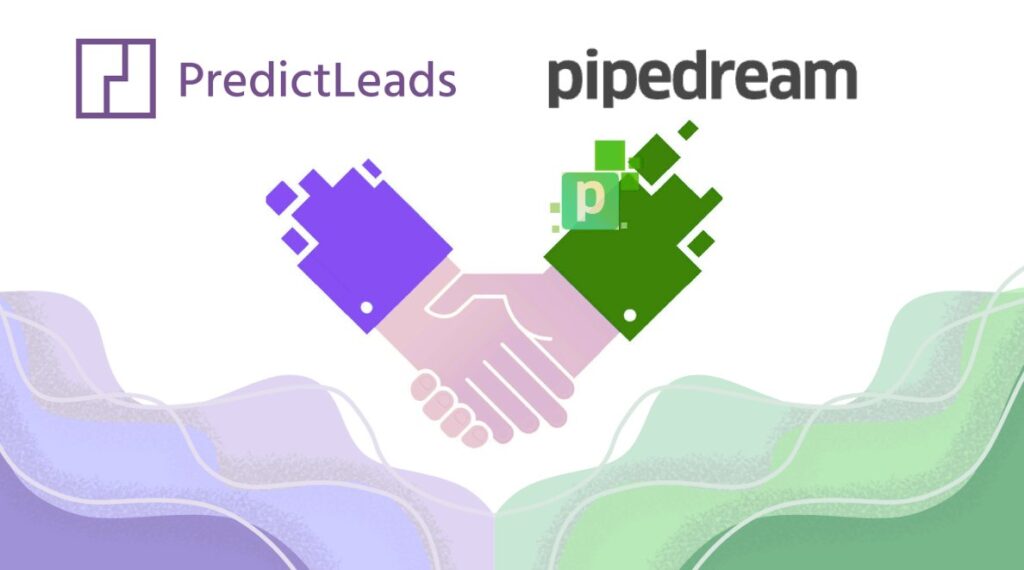Real-Time Data Personalization isn’t a buzzword but the foundation of truly relevant cold outreach. Most sales emails today pretend to be personal, but the timing is off. The message doesn’t match what the company is doing right now, which is why responses are low even when messaging is “customized.”
This article explains how real-time job openings and real-time news events create the context that makes outbound feel natural instead of random. When outreach reflects what’s actually happening inside a company, the message doesn’t just stand out but also benefits from effective personalization based on real-time data.
To go deeper into how PredictLeads structures this data, you can explore our documentation.
PredictLeads Docs

Jobs Reveal What Companies Are Building Right Now
New job openings are one of the strongest real-time signals in B2B. When a company posts a role, it tells you exactly where they’re investing:
- A team they’re scaling
- A capability they lack
- A bottleneck they’re preparing to solve
- A geography they’re entering
- A project they’re kicking off
Instead of generic outreach (“We help companies like yours…”), Real-Time Data Personalization lets you write outreach that reflects this immediate shift.
Example:
If a company suddenly opens several engineering or ops roles in one week, you know they’re getting ready up for a buildout (even before they say anything publicly.)
News Events Explain Why Those Roles Exist
Job data shows the what while News data shows the why.
Expansion announcements, new partnerships, funding rounds, layoffs, product launches. All these events offer context for the operational changes seen in job openings, allowing for real-time data personalization.
A company expanding into a new market?
You’ll see hiring in that region.
A company signing a large enterprise customer?
Support or onboarding roles usually appear.
A company restructuring?
Reductions in one function may be paired with increased hiring in another.
News events transform cold outreach from “I hope this resonates” into “I saw what’s happening, and here’s how I can help.”
For additional context categories, see this external guide.
News Events Categories
The Advantage Comes From Combining Both Signals
Real-time data personalization gets its power from aligning both signals:
- Jobs → operational direction
- News → strategic explanation
Together, they give you a timeline of what’s happening inside the company, enabling a seamless connection through data-driven personalization.
Expansion → hiring spike → operational strain → perfect outreach moment.
Funding → engineering growth → new product sprints → perfect outreach moment.
Layoffs → efficiency focus → consolidation → perfect outreach moment.
This context isn’t guesswork. It’s watching a story unfold in real time.
What Outreach Sounds Like When It’s Truly Contextual
Instead of generic lines like:
“Wanted to reach out because we help companies like yours…”
You write:
Expansion + hiring
“Saw you’re expanding into Ghana and opening several Ops and Support roles. Teams usually run into X during the first 90 days… & here’s how others manage it.”
Funding + engineering growth
“With the recent funding announcement and backend hiring spike, it looks like the engineering team is preparing for new product cycles. Here’s how others speed up Y during this stage.”
Layoffs + targeted hiring
“Saw the reductions in X but continued hiring in Y. That typically signals a shift toward efficiency. Here’s what’s working in similar transitions.”
This is how personalization in real-time data works in practice.
Automating the Workflow
Implementing this doesn’t require a complex stack:
- Fetch new jobs daily
- Fetch relevant news events daily
- Link them by company
- Trigger outreach based on time proximity or categories
- Push dynamic messaging into your outbound tool
PredictLeads’ schema is built in a relational way, so combining these signals is straightforward.
Why It Works
Personalization isn’t about writing someone’s name twice.
It’s about reflecting a company’s real-world situation with accurate data in real time.
Real-Time Data Personalization creates relevance, and relevance is what makes outreach convert.







